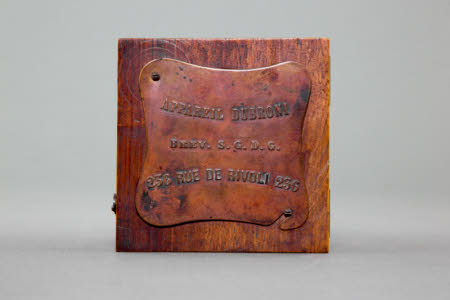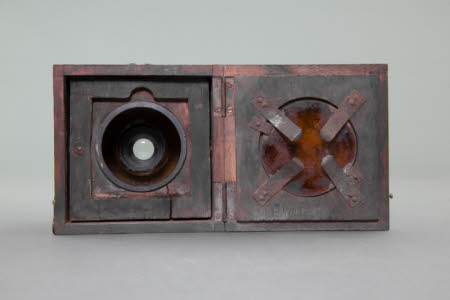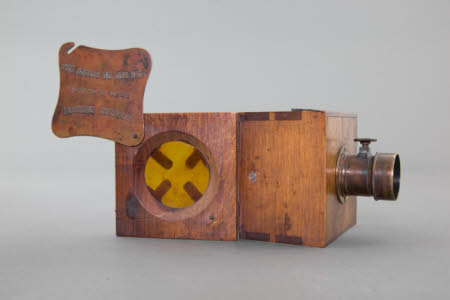Dubroni Wet plate camera
Category
Photographic technology
Date
1865 - 1870
Materials
Wood, Brass, Glass
Measurements
100 x 95 x 112 mm
Order this imageCollection
Fox Talbot Museum, Wiltshire
NT 1524949.1
Summary
Dubroni Wet plate camera. The Appareil Dubroni is a camera for wet collodion plates, made by Maison Dubroni in Paris for a few years from about 1864. The smallest models are box cameras; the larger ones have a bellows front for focusing. The interior of the camera body is lined with glass (in the early models; indeed, McKeown states that the first cameras had no wooden sides, only an amber glass 'bottle') and later porcelain, so that sensitization, development and fixing of each plate can be done inside the camera; this was the first camera to use such a system. The chemical solutions were put into and out of the camera with a bulb pipette. In the smaller cameras there is a large red window in the back of the camera, with a swivelling metal cover (or a hinged wooden one in some models), so that operations inside the camera can be viewed. The camera was invented by Jules Bourdin; "Dubroni" is an anagram of the name Bourdin. The camera has a wooden box structure and the lens is mounted in brass with screw focusing. Inside the body is a porcelain chamber to contain the development chemicals. The rear of the camera has an orange filter through which the development of the image could be observed. This is covered by a moveable brass plate which is embossed 'Appareil Dubroni Brev S.G.D.G. 236 Rue De Rivoli 236'. The top of the body has an orifice through which chemical solutions are added by means of a pipette.
Provenance
Part of The Fenton Collection. A gift from British Film Institute in 2017. From 1986-1999, part of BFI collection for the Museum of the Moving Image. BFI purchased collection in 1986 from James Fenton's Museum of Photography, Port Erin, Isle of Man 1976-1986




